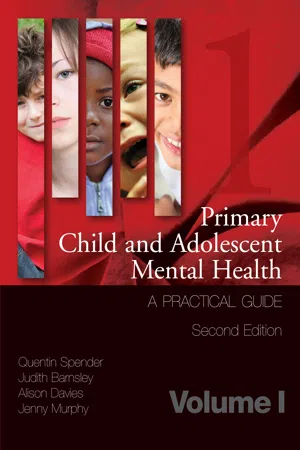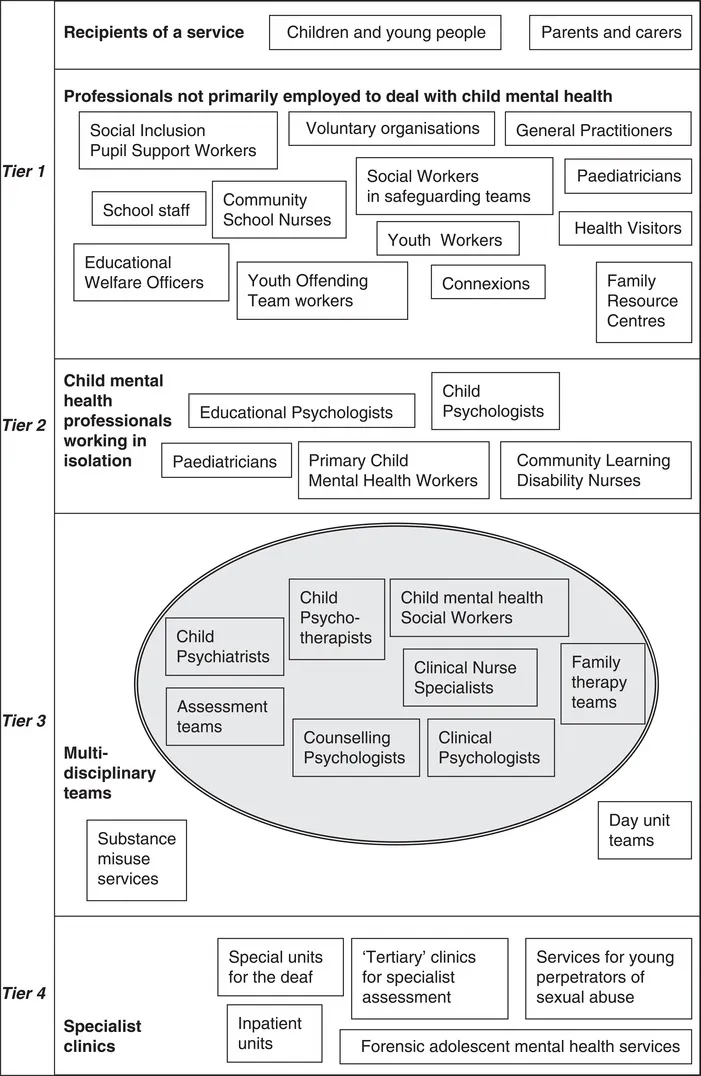
Primary Child and Adolescent Mental Health
A Practical Guide, Volume 1
- 260 pages
- English
- ePUB (mobile friendly)
- Available on iOS & Android
Primary Child and Adolescent Mental Health
A Practical Guide, Volume 1
About This Book
Rewritten with the new primary care environment in mind, this greatly expanded and updated edition of Child Mental Health in Primary Care extends the structured approach of the first edition to adoelscent mental health. As in the first edition, Primary Child and Adolescent Mental Health covers each problem in a uniform way, offering definitions, assessment outlines, detailed management options and indications for referral. Numerous case examples further illuminate aspects of many conditions. Comprehensive and practical, the forty-eight chapters of Primary Child and Adolescent Mental Health cover the full range of difficulties and disabilities affecting the mental health of children and young people. The book is divided into three volumes, and can either be read from cover to cover or used as a resource to be consulted for guidance on specific problems. This book is vital for all healthcare professionals including general practitioners, health visitors and other staff working in primary care to assess, manage and refer children and adolescents with mental health problems. School medical officers, social workers and educational psychologists, many of whom are in the front line of mental health provision for children and young people, will also find it extremely useful. Reviews of the first edition: 'This very comprehensive and detailed book provides the tools for primary care health professionals not only to assess a child's needs but in many cases also to implement an initial package of care.' JUST FOR NURSES 'I have no reservation in recommending the book to all people working with children and families in any capacity. An important training text for a variety of professions. A very effective text to be used in daily practice for quick reference.' CHILD AND ADOLESCENT MENTAL HEALTH 'This book is well produced and clearly written. A useful book for anyone interested or involved with children.' FAMILY PRACTICE 'I looked through the book again and again but could not find anything missing.' NURSING TIMES
Frequently asked questions
Information
PART 1
Overview
CHAPTER 1
The context for provision of Child and Adolescent Mental Health Services
A Definition of Child Mental Health
- a capacity to enter into and sustain mutually satisfying personal relationships

- a continuing progression of psychological development

- an ability to play and to learn so that attainments are appropriate for age and intellectual level

- a developing moral sense of right and wrong

- the degree of psychological distress and maladaptive behaviour is within normal limits for the child’s age and context.

- a capacity to use and enjoy solitude

- empathy and awareness of others’ feelings

- continuing emotional, intellectual and spiritual development

- becoming able to learn and benefit from setbacks or problems.

The Organisation of Services
The Four-Tier model
- ‘Team Around the Child’

- ‘Behavioural and Educational Support Team’

- ‘Multi-Agency Support Team’

- ‘Social Inclusion Team’

- ‘Integrated Service Delivery Areas’

- ‘Primary Care Behaviour Service’

- ‘Children’s Emotional Health and Wellbeing Service’

- ‘Targeted Mental Health in Schools’ team

- and many others.


Table of contents
- Cover
- Title Page
- Copyright Page
- Contents
- Preface to the second edition
- About the authors
- Acknowledgements
- Part 1: Overview
- Part 2: General issues
- Index